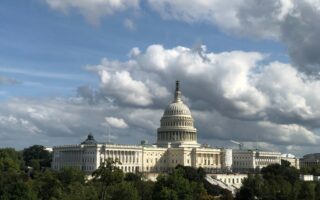Updated Guidance from the DOL on COBRA Subsidies Under ARPA
By Kevin M. Mosher • Apr 16, 2021
Stressing about the new COBRA requirements under the American Rescue Plan Act (“ARPA”)? Look no further! On April 7, 2021, the Department of Labor issued some (much needed) guidance regarding the new COBRA obligations imposed by ARPA, which we’ll be breaking down in today’s HR Tip of the Week. If you need a refresher on the basics, please refer to the HR Tip of the Week from March 23, 2021.
Back up—What are the new COBRA requirements?
You may remember President Biden signing a nearly two trillion-dollar stimulus package back in March. That stimulus package was the ARPA. Among many other things, ARPA provides premium assistance so that “Assistance Eligible Individuals” or can continue their health benefits under COBRA free of charge. Instead of charging Assistance Eligible Individuals for their premium, employers, plan sponsors, insurers, plan administrators, etc. cover the cost (including any administrative fees) and claim the expense as a tax credit. We are still waiting on guidance from the Internal Revenue Service on the tax credits—stay tuned for that, though it appears the credits will offset quarterly 941 tax payments employers make.
Who’s an Assistance Eligible Individual?
Anyone who is eligible for COBRA benefits between April 1, 2021 and September 30, 2021 because of a reduction in hours or an involuntary termination of employment and elects COBRA benefits is considered an Assistance Eligible Individual. However, individuals who are eligible for other group health coverage, like through a new employer or a spouse’s plan, are not eligible for the premium assistance. Individuals terminated for gross misconduct or voluntarily resign don’t qualify, either.
Does the subsidy apply to all types of plans?
The COBRA premium assistance applies to all group health plans sponsored by private-sector employers or unions that are subject to the COBRA rules under the Employee Retirement Income Security Act of 1974 (otherwise known as “ERISA”). This includes dental and vision benefits, but not FSAs.
How does the additional election opportunity work?
Qualified beneficiaries who lost coverage due a reduction in hours or an involuntary termination prior to April 1, 2021 and who are not currently enrolled in COBRA benefits may have an additional election opportunity at this time if they are still within their COBRA window. However, the COBRA subsidy does not extent COBRA continuation beyond the original maximum period (generally 18 months). Anyone eligible for this additional COBRA election period must receive a notice of the extended COBRA election period by May 31, 2021. Coverage under these circumstances will begin the first period of coverage beginning one or after April 1, 2021.
How does this apply to mini-COBRA laws?
COBRA only applies to employers with 20 or more employees, but some smaller employers are subject to state “mini-COBRA” laws. ARPA does not change any requirement of state insurance continuation programs, like mini-COBRA laws, but Assistance Eligible Individuals who elect continuation under such state programs are permitted to receive premium assistance and switch to other coverage offered to similarly situated active employees if the plan allows it.
What notices do we have to issue?
-
A general notice to all qualified beneficiaries who lose coverage due to a reduction in hours or involuntary termination from April 1, 2021 through September 30, 2021. This can be included with the normal COBRA election notice.
-
A notice of extended COBRA election period to any Assistance Eligible Individual who had a qualifying event before April 1, 2021. This doesn’t include individuals whose maximum COBRA continuation period would have ended before April 1, 2021 (so, you’d be safe sending it to anyone who lost coverage due to a reduction in hours or involuntary termination on or after October 1, 2019). This must be provided by May 31, 2021.
-
Notice of expiration of premium assistance explaining that the premium assistance will expire soon, the date of expiration, and that the individual maybe eligible for coverage without any premium assistance through COBRA continuation coverage or coverage under a group health plan. This notice must be provided 15–45 days before the premium assistance expires.
What information should we include in the notices.
First, take a look at the model notices here. Otherwise, make sure you have the following information:
-
The forms necessary for establishing eligibility for the premium assistance;
-
Contact information for the plan administrator or whoever maintains relevant information in connection with the premium assistance;
-
A description of the additional election period (if applicable);
-
A description of the requirement that the Assistance Eligible Individual notify the plan if they become eligible for coverage under another group plan or for Medicare and the penalty for failing to do so;
-
A description of the right to receive the premium assistance and the conditions for entitlement;
-
If offered by the employer, a description of the option to enroll in a different option available under the plan.
Thompson Coe and myHRgenius Tip of the Week is not intended as a solicitation, does not constitute legal advice, and does not establish an attorney-client relationship.










